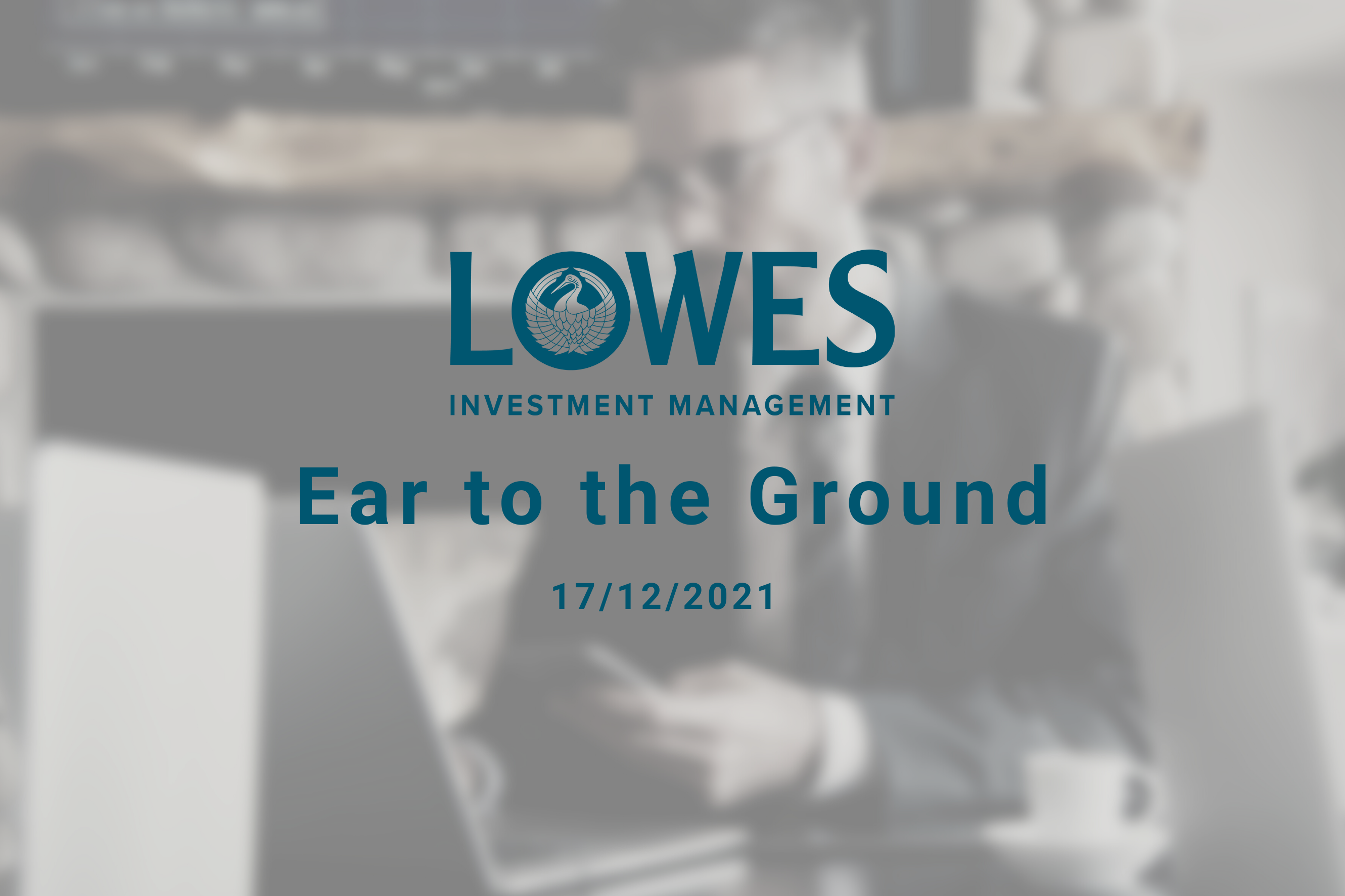Ear to the ground
17 December 2021

Central banks took centre stage this week. First up we had the US Federal Reserve. At their meeting they confirmed that they are doubling the pace of tapering to $30bn a month which should mean that it is concluded by March 2022 at this revised rate. Whilst interest rates were kept on hold for now the latest dot plot chart, a summary of predictions from committee members, predicts that we will see three 25bp hikes next year, a significant uplift from the previous median prediction where only one was priced in. The median dot plot for 2023 suggests a further three hikes, taking rates to 1.625%, representing an increase from the previously expected 1%. Longer run the expectation is for an interest rate of 2.5%.
Next up we had the Bank of England’s Monetary Policy Committee. Whilst they took the decision to keep the size of the balance sheet the same, they surprised the market by increasing the Bank Rate by 0.15% to 0.25%. They had been expected to remain on hold but instead voted for this increase by a majority of 8 to 1. Whilst they expect inflation to fall back materially from the second half of next year they forecast that CPI will remain around 5% (current rate 5.1%) for the majority of the winter, potentially peaking at around 6% in April next year. The initial market reaction, 2 year gilt yields initially spiked to 0.55% but subsequently retraced back towards the yield before the announcement of 0.48%. Sterling was a beneficiary, appreciating across other major currencies such as the US dollar.
Despite increasing its inflation forecast to 3.2% from 1.7% for 2022 the ECB maintained their stance that inflation would prove transitory. For 2023 they did increase their forecast to 1.8% from 1.5%. They did however announce that it would be reducing asset purchases under its pandemic emergency purchase programme (PEPP). To counter this however they announced that they would be increasing their bond buying under their asset purchase programme (APP) to offset some of the lost stimulus. For now it would appear that the ECB sees the euro area as being in a different place to the US and UK. Whilst the potential for interest rate hikes now certainly appears to be on the up, it is perhaps worth remembering that in emerging markets we have already seen in excess of 80 hikes in 2021. Changes in interest rate expectations and the non-uniform nature of these could have implications for the currency markets. With three interest rate hikes now expected in the US, this could act as a catalyst for dollar strength. However, research from BCA Research estimates that, based on a purchasing power parity basis, the currency is already trading 20% above its fair value. Conversely, the British Pound, where interest rates have already began their ascendancy, would appear to still be on the cheap side. Currency translation can of course have a meaningful impact on the return you achieve from holding overseas assets. One to watch.
Changing our focus to technology stocks, the Nasdaq Composite Index fell almost 2.5% on Thursday. This pails into significance however when we look at the performance of Nasdaq Golden Dragon China, an index which contains companies whose common stock is publicly traded in the US but where the majority of their business in conducted within the People’s Republic of China. Since its inception in 2016 the index is up a mere 16.95%, having fallen almost 60% from its high set in only February of this year.
Canary in the coal mine? Perhaps not, given the particular focus on these companies from the Chinese authorities. An opportunity? Perhaps too early to say, on the basis of the same reason above. Perhaps more interesting to watch is the performance of the underlying stocks in the Nasdaq Composite index. Here, despite the index being close to all-time highs, more than 60% of the stocks are down more than 20%, the definition of a bear market, from their all-time highs, whilst in excess of 30% are down 50%. With figures on a market capitalisation for these same statistics much lower, it would appear that we have large cap, narrow leadership at play.
Sticking with China, the rumblings in the property market continues. Whilst contagion might not be as obvious in terms of their ability to repay debt, it certainly appears evident in the year to date share price performance of major Chinese property companies. Evergrande shares are down almost 90% in the year to date and another eight have seen their share price fall more than 50%.
So, as always there are many things to be keeping an eye on as we approach the new year, some good, some not so good. Whatever your concerns maybe, perhaps it is worthwhile making sure you have some protection in place, just in case. Or to quote Warren Buffet, “Predicting rain doesn’t count, building an ark does.” This article is for information purposes only and should not be construed as advice. We strongly suggest you seek independent financial advice prior to taking any course of action.
The value of this investment can fall as well as rise and investors may get back less than they originally invested.
Past performance is not necessarily a guide to future performance.
The Fund is suitable for investors who are seeking to achieve long term capital growth.
The tax treatment of investments depends on the individual circumstances of each client and may be subject to change in the future. The above is in relation to a UK domiciled investor only and would be different for those domiciled outside the UK. We strongly suggest you seek independent tax advice prior to taking any course of action.
Subscribe Today
To receive exclusive fund notifications straight into your inbox, please complete this form.